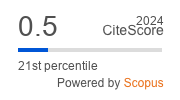Clinical case of endoscopic transnasal treatment of craniopharyngioma in children and adolescents

Full Text:
Abstract
Introduction. Craniopharyngioma (CF) is the most common non - glial benign intracerebral tumor among children, which can be removed by both microsurgical and endoscopic methods. Case report. A 16-year - old patient was hospitalized with complaints of decreased visual acuity and a bursting headache. Based on neuroimaging data, CF of size up to 33.5×21×23 mm was detected that compressed chiasm, a suprasellar cistern and the bottom of the third ventricle. Surgery was performed to remove the tumor using transnasal endoscopic approach. Wide dissection of the tumor and bimanual endoscopic preparation made it possible to preserve the hypothalamus and the pituitary stalk. Histological examination of the removed tumor revealed an adamantine - like CF of the first degree of malignancy according to the WHO classification. The early postoperative period was uneventful, according to neuroimaging: the tumor bed was filled with content of fat density. A follow - up examination taken a year later did not reveal continued growth. Neurological improvement in the absence of a headache was confirmed, along with an improvement in visual acuity in the right eye, no hormonal disorders were found. Discussion. The transnasal endoscopic method for the removal of volumetric formations of the parasellar region in children is rarely used in practice due to the anatomical features. Our experience has shown good postoperative results of this technique in the treatment of CF in children, and we believe that this is a promising method of treatment for this pathology. But at the same time, we cannot argue that the method is suitable in all cases of parasellar tumour, so if the tumor size is more than 35 mm, we resort to the microsurgical technique, because in this case the transnasal approach does not provide total tumor removal.
About the Authors
A. A. Sufianov
Federal Center of Neurosurgery; Sechenov First Moscow State Medical University (Sechenov University)
Russian Federation
I. P. Salamov
Sechenov First Moscow State Medical University (Sechenov University)
Russian Federation
I. A. Iakimov
Federal Center of Neurosurgery; Sechenov First Moscow State Medical University (Sechenov University)
Russian Federation
R. A. Sufianov
Sechenov First Moscow State Medical University (Sechenov University)
Russian Federation
R. R. Rustamov
Federal Center of Neurosurgery; Sechenov First Moscow State Medical University (Sechenov University)
Russian Federation
M. M. Abdumazhitova
Federal Center of Neurosurgery; Sechenov First Moscow State Medical University (Sechenov University)
Russian Federation
Views:
1520






































